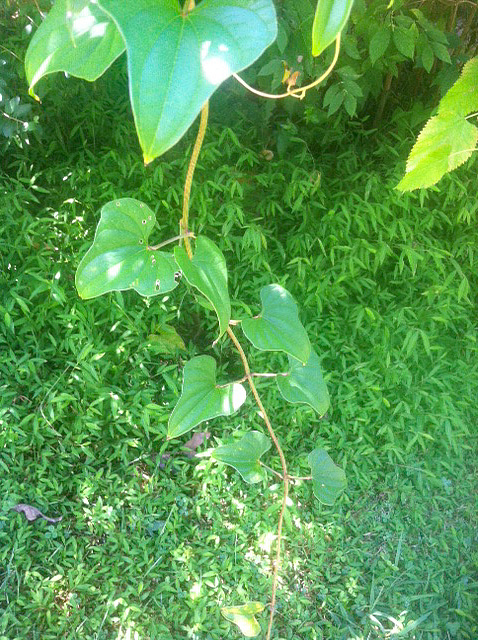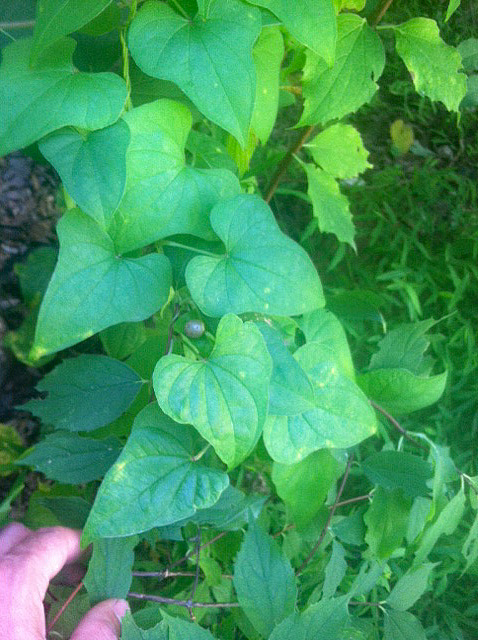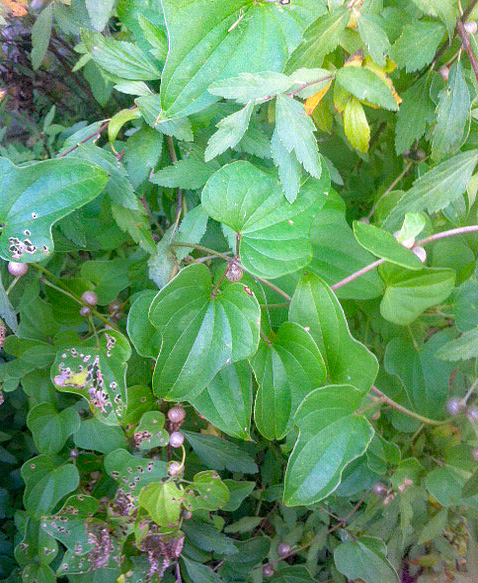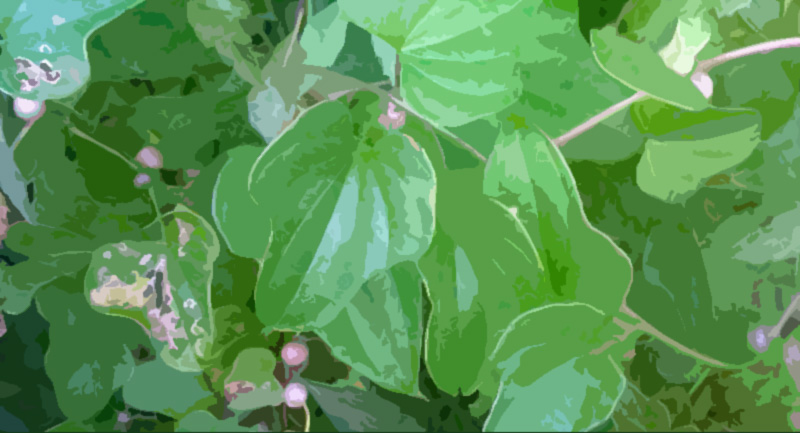Andrew found me on YouTube and shared pictures of some very familiar edible wild yams he found on his property:
“I’ve been eating these already, no problems. Here’s pics.”

He continues: “Tedious to harvest by hand though. Need a sheet spread beneath. I’ll try to dig up a root and get a pic of that for you too. These volunteered somehow and on the north side of a large 2 story house with big oak trees keeping it pretty cool and shaded. Plenty of rain from the roof and no gutters.”

When I asked where these vines were located, he wrote “Mebane, NC. Near downtown at a residence.”

So, for those of you who wish you could get in on the yam-growing action but live farther north than yams generally grow, here’s your species: Dioscorea batatas, also known as Dioscorea opposita.
That’s the “yamberry” Eric Toensmeier writes about in his entertaining book Paradise Lot.
And it’s one of the varieties I grew in North Florida. The edible bulbils are featured in this video:
And the long, snaky roots in this one:
And yes, it is an evil invasive species. Very, very evil. Very, very invasive.
The government of Michigan warns about it:
Habitat: This deciduous vine can be found along roadsides, fence rows, stream banks, ditches, and rich, mesic forests. While it tolerates anything from full sun to deep shade, it prefers intermediate light.
Native Range: Asia
U.S. Distribution: Chinese yam has spread to 16 southeastern states since its introduction in the 1800’s and has been recorded in some locations in Michigan.
Local Concern: Chinese yam can grow up to 16 feet in height, engulfing surrounding vegetation along the way. While this vine dies back in the winter, it grows and reproduces quickly enough to reduce plant diversity and threaten native ecosystems.
Michigan is joined in its concern by many other states. I have read reports like the one above that Chinese Yam vines will overrun native species.
But on the bright side, Plants for a Future shares how delicious it is:
Edible Parts: Fruit; Root.
Edible Uses:
Tuber – cooked[1, 46, 61, 105]. A floury texture[27] with a very pleasant flavour that is rather like a potato[K]. The tubers can be boiled, baked, fried, mashed, grated and added to soups[183]. They store well and for a long time[27, 37] and can also be left in the ground and harvested as required in the winter[K]. This is a top quality root crop, very suitable for use as a staple food[K]. An arrowroot can be extracted from the root[46], though this is not as good at binding other foods as the starch from D. japonica[183]. The root contains about 20% starch. 75% water, 0.1% vitamin B1, 10 – 15 mg% vitamin C[174]. Fruit. A starchy flavour, it is said to be very good for the health[206]. We wonder if this report is referring to the tubercles[K]. We’ve heard the aerial tubers can be eaten and are very tasty.
It’s obvious what we need to do, right?
We need to eat it! And if perhaps a few plants escape into our gardens every year, well, we should eat those too.
Relying on one root crop for calories isn’t antifragile. Grow potatoes – they’re great. But also add turnips, yams, taro, Jerusalem artichokes, cassava or whatever else works in your climate. In North Carolina, it seems obvious that one decent choice is the Chinese yam.

